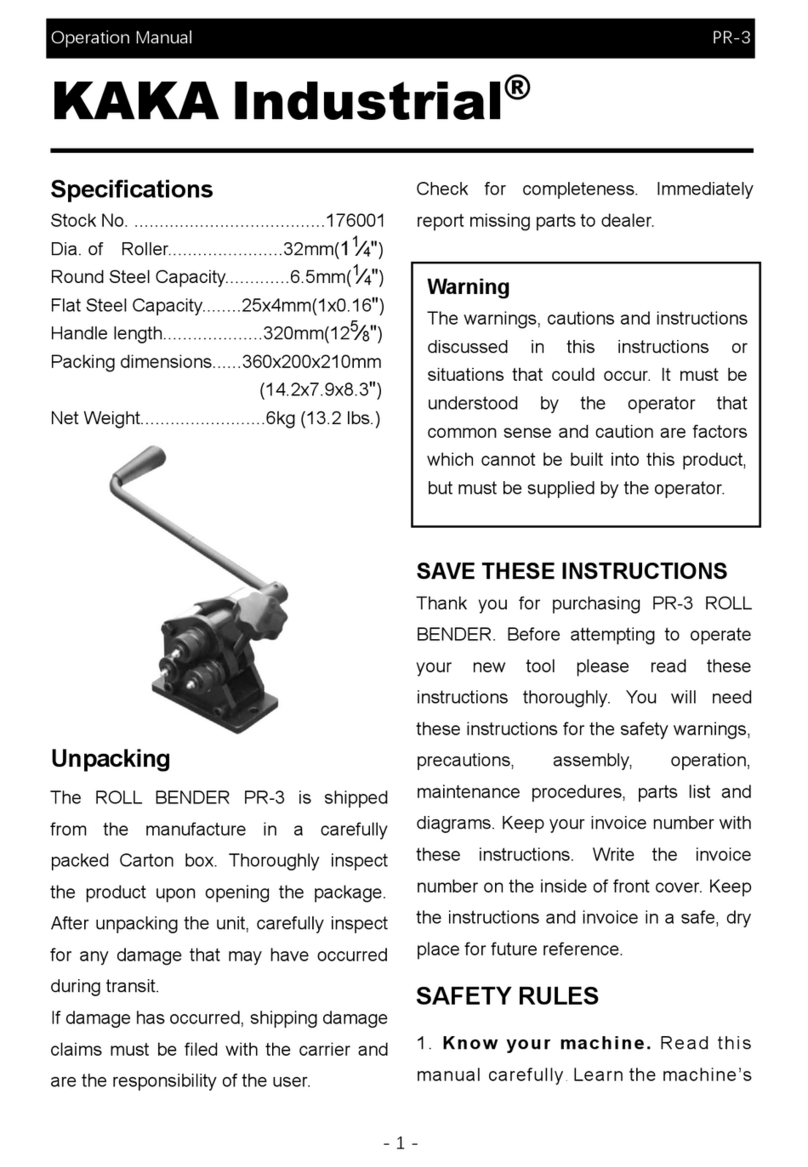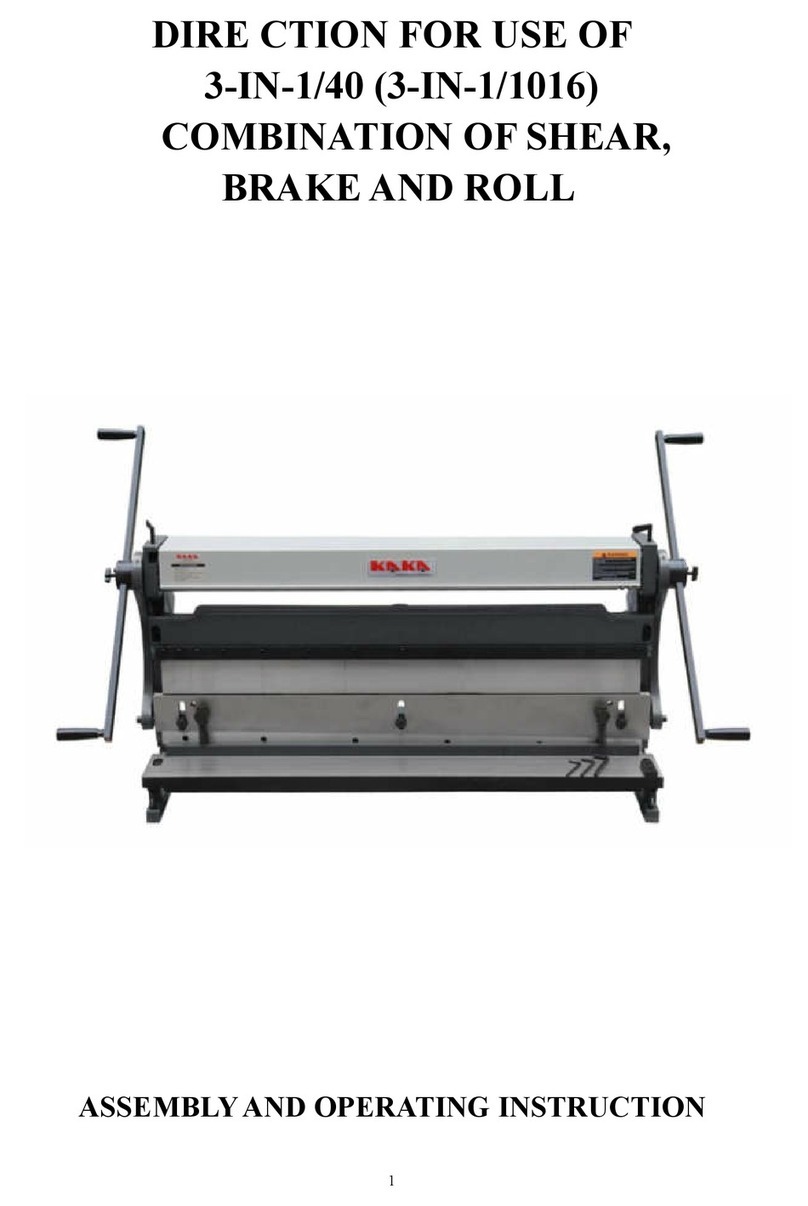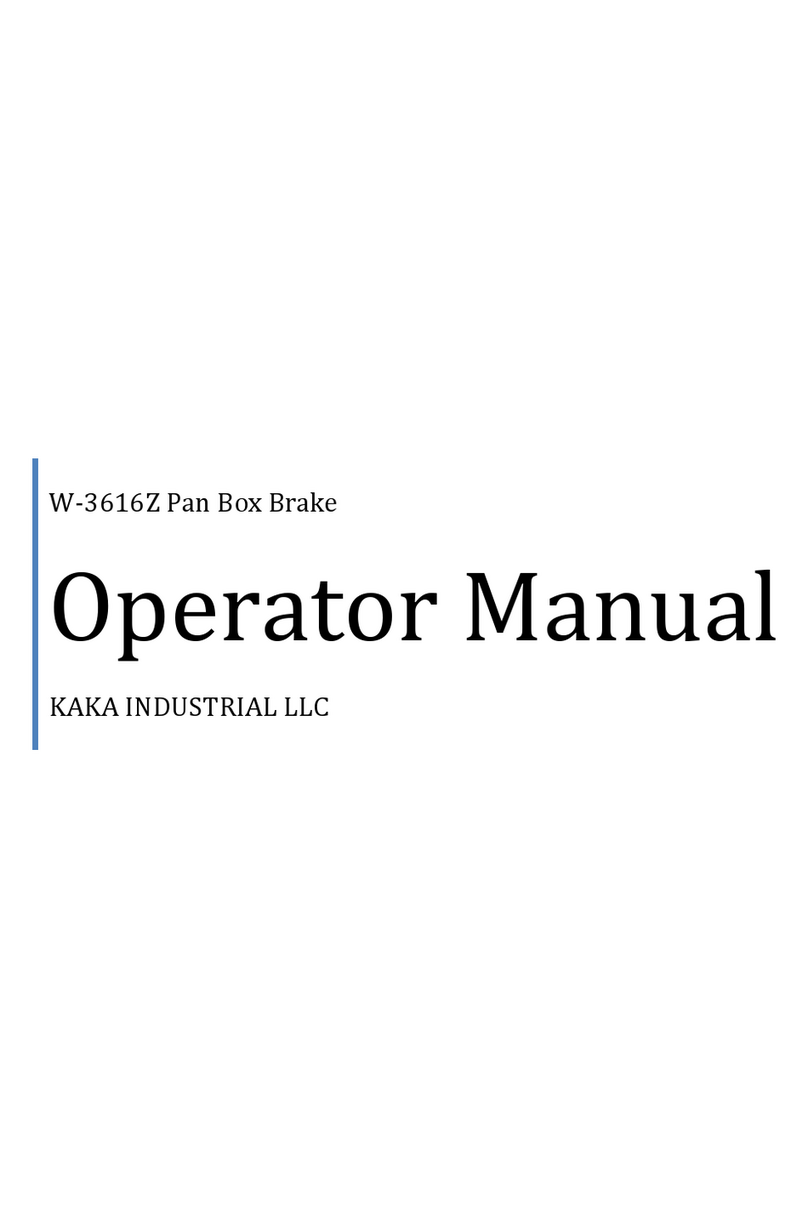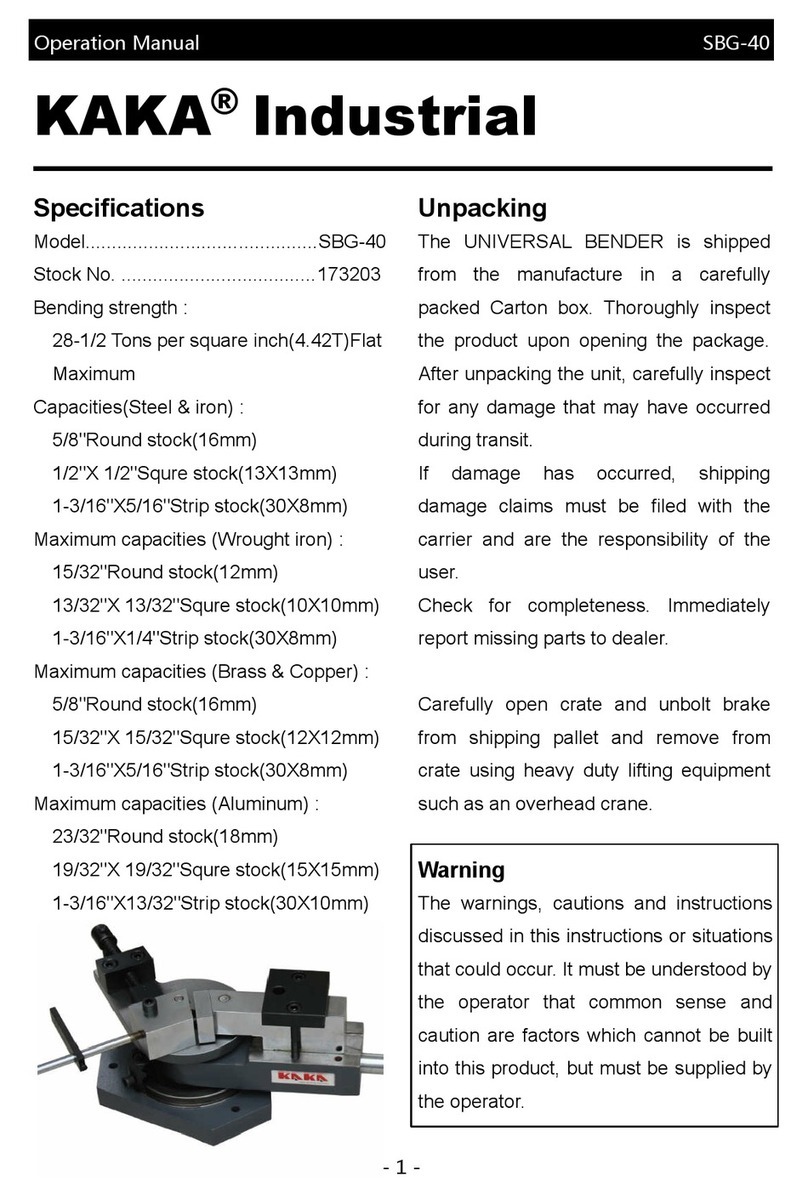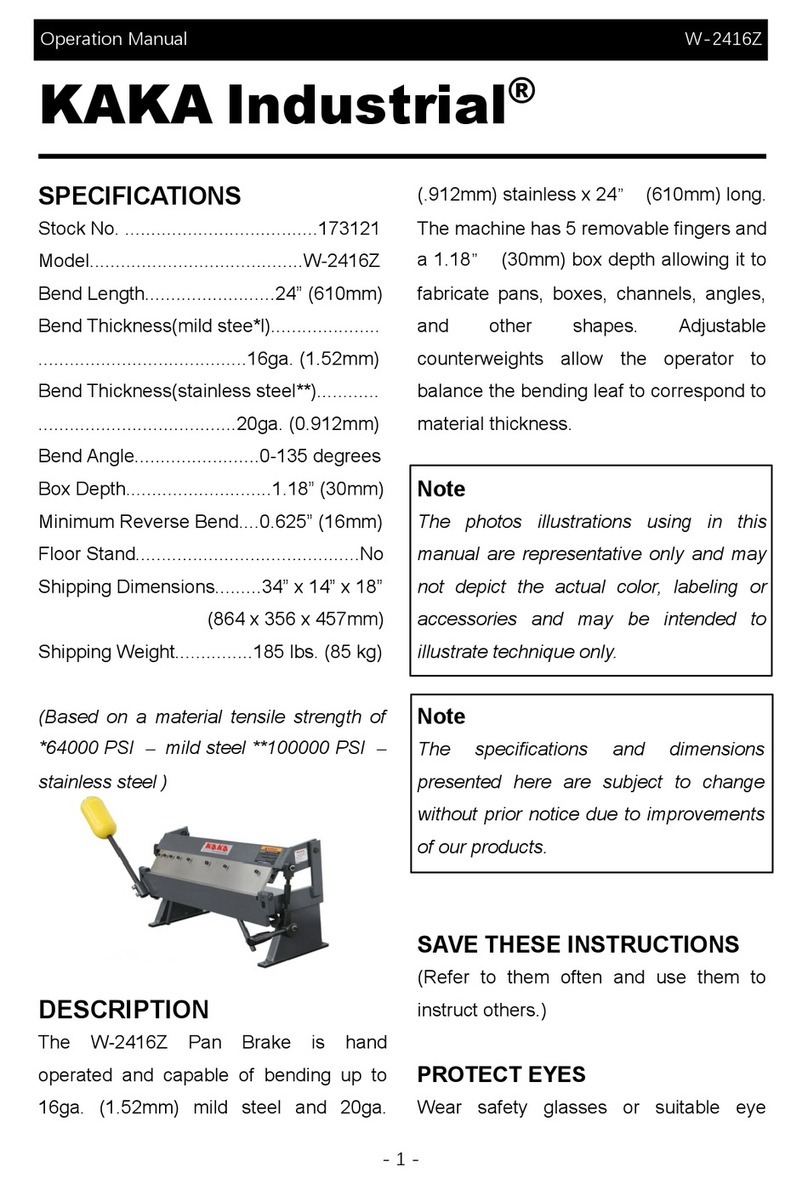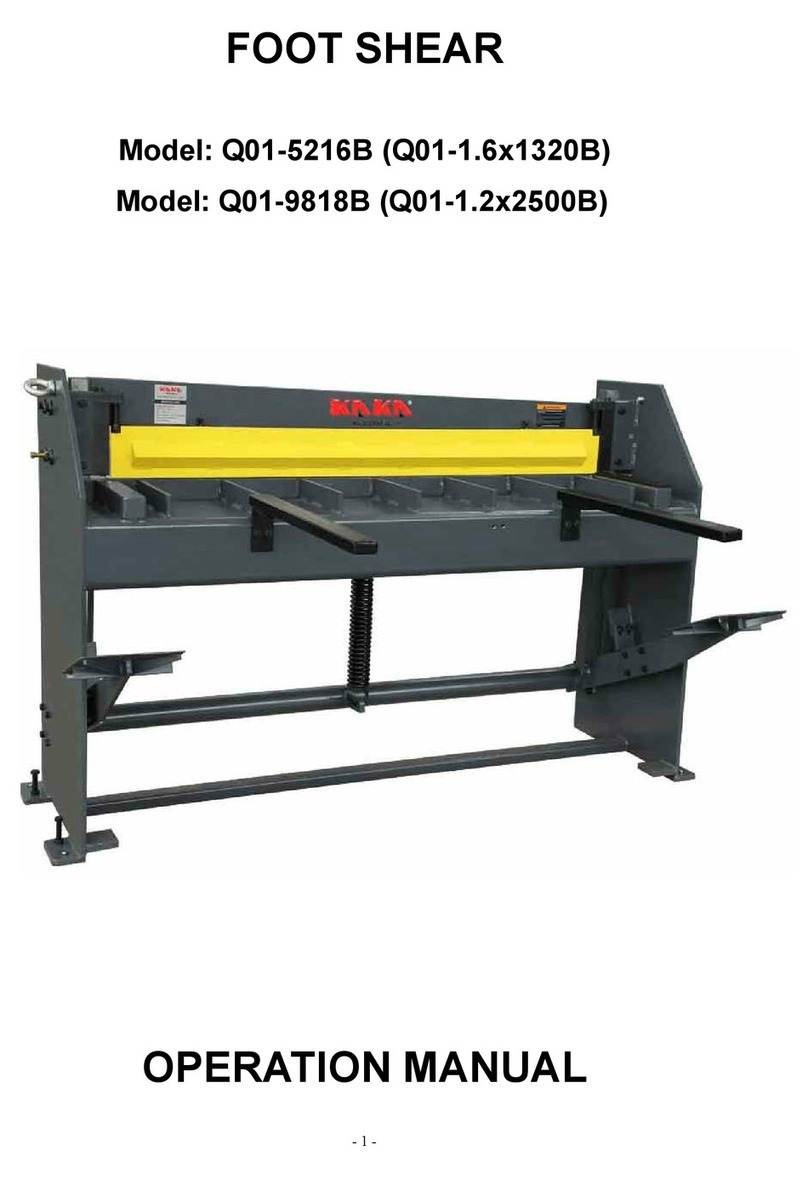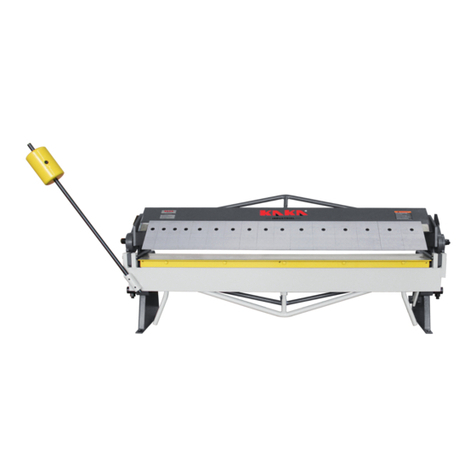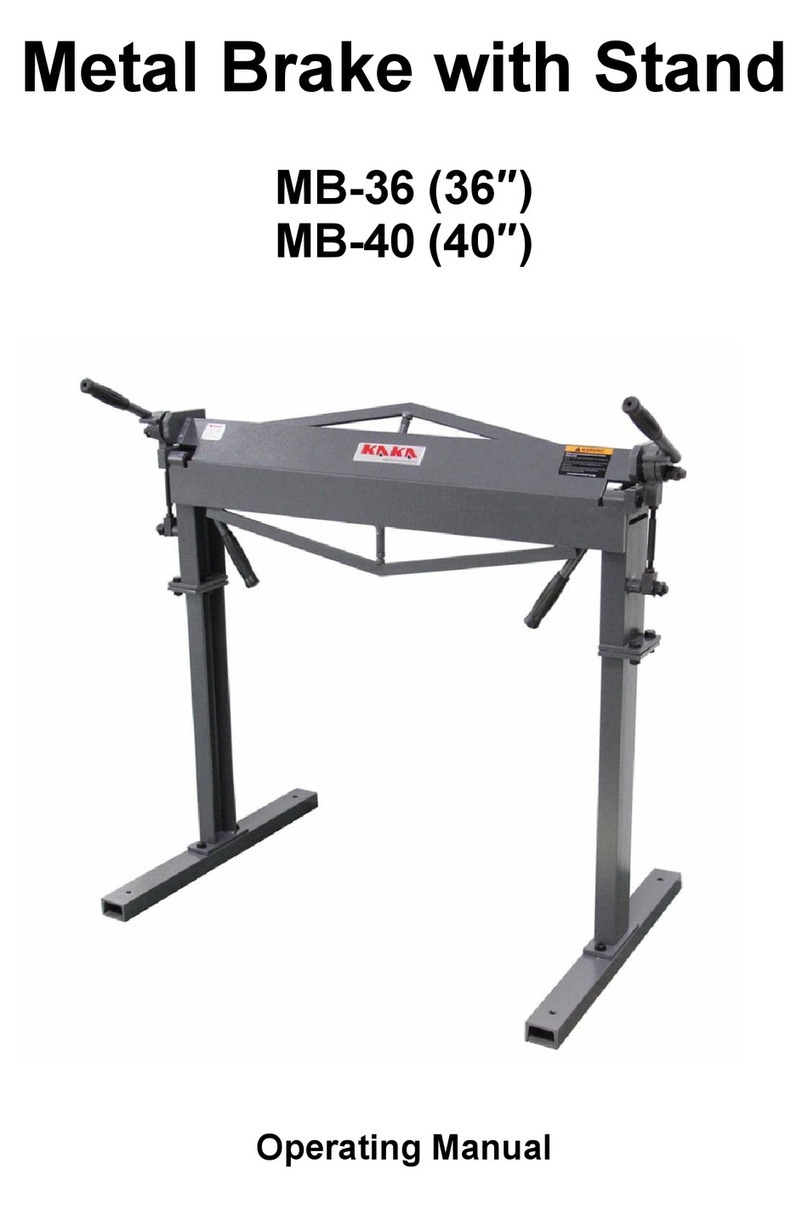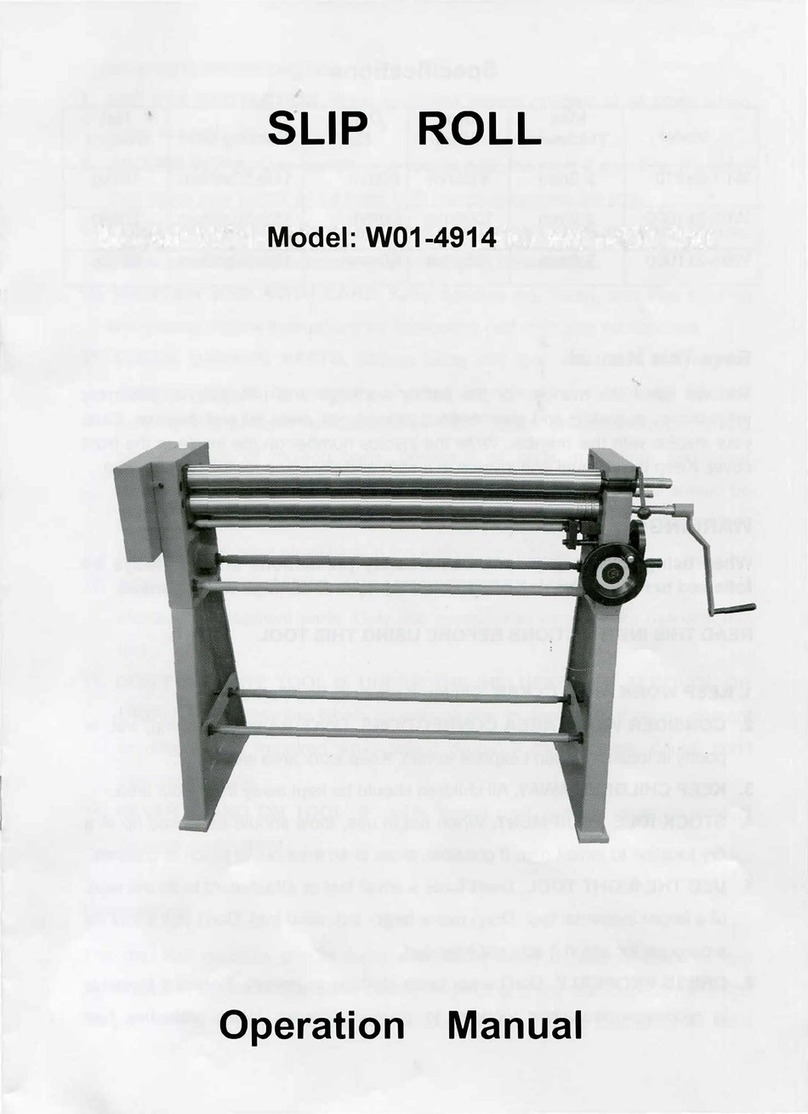
Operation Manual 3-IN-1/30
Model 3-IN-1/30
- 2 -
number with these instructions. Write the
invoice number on the inside of front
cover. Keep the instructions and invoice
in a safe, dry place for future reference.
SAFETY RULES
1. Know your machine. Read this manual
carefully. Learn the machine’s
applications and limitations, as well as
specific potential hazards peculiar to it.
2. Keep work area clean and well lit.
Cluttered or dark work areas invite
accidents.
3. Keep Children away. All children
should be kept away from the work area.
Never let a child handle a tool without
strict adult supervision.
4. Do not operate this tool if under the
influence of alcohol or drugs. Read
warning labels on prescriptions to
determine if your judgment or reflexes are
impaired while taking drugs. If there is
any doubt, do not attempt to operate.
5. Use safety equipment. Eye protection
should be worn always when operating
this machine. Use ANSI approved safety
glasses. Everyday eyeglasses only have
impact resistant lenses. They are NOT
safety glasses. Dust mask, non-skid
safety shoes, hard hat, or hearing
protection should be used in appropriate
conditions.
6. Wear proper apparel. Loose clothing,
gloves, neckties, rings, bracelets, or other
jewelry may present a potential hazard
when operating this machine. Please
keep all apparel clear of the machine.
7. Don’t overreach. Keep proper footing
and balance always when operating this
product.
8. Check for damage. Check your tool
regularly. If part of the tool is damaged it
should be carefully inspected to make
sure that it can perform its’ intended
function correctly. If in doubt, the part
should be repaired. Refer all servicing to
a qualified technician. Consult your
dealer for advice.
9. Maintain tools with care. Keep tools
sharp and clean. Properly maintained
tools, with sharp cutting edges, are less
likely to bind and are easier to control.
10. When you move, install, clean or
adjust the machine, keep away from the
shears.
11. Put down the protective cover when
you don’t use the sliding roll of the
machine.
12. Keep your hands away from the die
when you are working on it.
